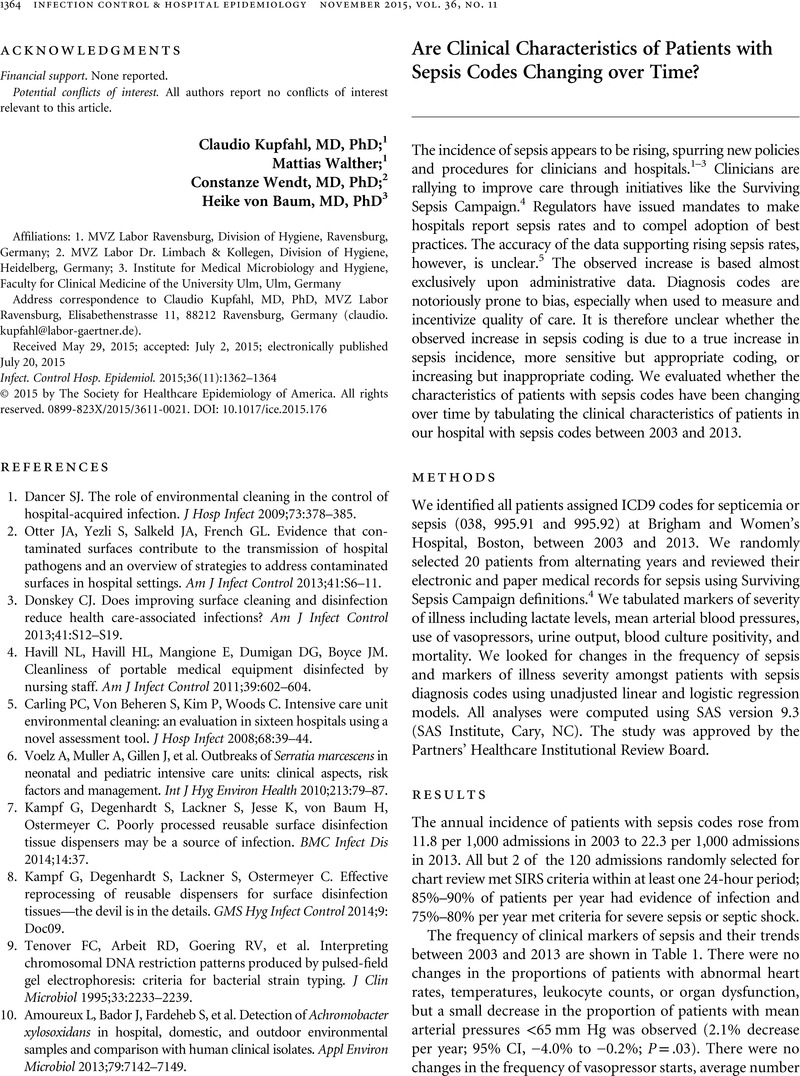Crossref Citations
This article has been cited by the following publications. This list is generated based on data provided by Crossref.
Gastmeier, Petra
and
Behnke, Michael
2016.
Electronic surveillance and using administrative data to identify healthcare associated infections.
Current Opinion in Infectious Diseases,
Vol. 29,
Issue. 4,
p.
394.
Law, Anica C.
Stevens, Jennifer P.
and
Walkey, Allan J.
2019.
National Trends in Timing of Death Among Patients With Septic Shock, 1994–2014.
Critical Care Medicine,
Vol. 47,
Issue. 11,
p.
1493.



